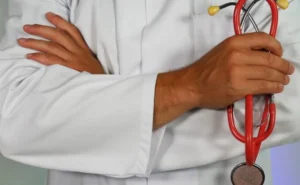Table of Contents
National Transit Pass System (NTPS)
Context: Recently, the National Transit Pass System (NTPS) was rolled out across India by the Union Minister for Environment, Forest and Climate Change.
About National Transit Pass System (NTPS)
- Purpose: Designed to ensure smooth transit of timber, bamboo, and other forest products nationwide.
- Current System: At present, transit permits for these goods are issued according to state-specific rules.
- Unified Approach: NTPS introduces a “One Nation-One Pass” system for hassle-free transit across different states.
- Digitalization and Streamlining: The system digitalizes and simplifies permit issuance, benefiting tree growers and agroforestry farmers by making business procedures easier.
- Comprehensive Permit Management: It enables streamlined issuance of transit permits for both inter-state and intra-state transportation, covering forest produce from private lands, government forests, and private depots.
- QR Coded Permits: Permits generated under NTPS include QR codes for quick verification at check gates, facilitating uninterrupted transit.
- User-Friendly Interface: The system includes both desktop and mobile applications for straightforward registration and permit application processes.
- Regulation of Tree Species: Permits will be issued for regulated tree species, while self-generated No Objection Certificates are available for exempted species.
- Widespread Adoption: Currently, 25 states and union territories have adopted this unified permit system, enhancing the ease of interstate transactions for producers, farmers, and transporters.
- Ministry: Ministry of Environment, Forest, and Climate Change.
We’re now on WhatsApp. Click to Join
SMART 2.0
Context: The Central Council for Research in Ayurvedic Sciences (CCRAS) and the National Commission for Indian System of Medicine (NCISM) have jointly launched the ‘SMART 2.0’ (Scope for Mainstreaming Ayurveda Research among Teaching Professionals) program.
About SMART 2.0
- Aim: To enhance clinical research in key areas of Ayurveda by fostering collaborations between Ayurvedic academic institutions and hospitals nationwide.
- To establish concrete evidence showcasing the effectiveness and safety of Ayurveda treatments, and to integrate these findings into public healthcare systems.
- Focus: On assessing the safety, tolerability, and patient adherence to Ayurvedic formulations, particularly in priority research areas like malnutrition, insufficient lactation, and abnormal uterine bleeding.
- Priority Research Areas: Areas of Bal Kasa, Malnutrition, Insufficient lactation, Abnormal Uterine Bleeding, Osteoporosis in postmenopausal women and Diabetes Mellitus (DM)2.
- ‘SMART 1.0’ phase: Research was conducted on approximately 10 diseases, involving active contributions from educators at 38 colleges.
Asia’s first hyperloop facility
Context: ArcelorMittal is collaborating with the IIT Madras’s Hyperloop Technology teams (Avishkar Hyperloop) and TuTr Hyperloop (a startup incubated in IIT Madras) to develop Hyperloop Technology in Tamil Nadu.
About Hyperloop Technology
- Hyperloop is an innovative concept for a high-velocity transportation system, intended for both passenger and freight transport.
- Components:
- Specialised tubes: The tubes in this system are essentially long, low-pressure tunnels designed to minimise air resistance.
- Transportation Pods: The pods, functioning as the vehicles in this system, are pressurised capsules that travel at high speeds with reduced friction, primarily using magnetic propulsion technology.
- Terminals: Terminals in the Hyperloop network serve as stations for the pods, managing their arrival and departure.
- Aim: To achieve speeds comparable to aircraft by transporting pods through vacuum tubes, potentially reducing travel times by up to 90%.
- Advantages over traditional transport methods: Including energy efficiency, on-demand service, cost-effectiveness, and a smaller environmental footprint.
- Other Project In India: The Maharashtra government and Virgin Group have signed an agreement to develop a Hyperloop route connecting Mumbai and Pune.
- A committee led by NITI Aayog Member V K Saraswat is assessing the technological and economic feasibility of implementing Virgin Hyperloop technology in India.
Kochi-Lakshadweep Islands Submarine Optical Fiber Connection (KLI-SOFC) project
Context: PM Modi recently inaugurated the Kochi-Lakshadweep Islands Submarine Optical Fibre Connection (KLI-SOFC) project during his visit to Kavaratti, Lakshadweep.
About Kochi-Lakshadweep Islands Submarine Optical Fibre Connection (KLI-SOFC) project
- Project Overview: The project has expanded submarine cable connections from Kochi to eleven islands in Lakshadweep, including prominent ones like Kavaratti, Agatti, and Minicoy.
- Previous Communication Methods: Before this project, the islands’ communication depended entirely on satellite links, which offered limited bandwidth and couldn’t keep up with increasing demands.
- Benefits to Residents: Lakshadweep’s population will gain access to high-speed broadband via Fibre to the Home (FTTH) and enhanced mobile networks with 5G/4G technology.
- Funding Source: Universal Services Obligation Fund (USOF), under the Department of Telecommunication.
- Total Length of the Submarine Cable: 1,868 kilometres.
- Implementing Agency:
- BSNL is serving as the primary executing agency for the project.
- M/s NEC Corporation India Pvt Ltd has been awarded the contract for the implementation.
- Key Project Tasks: The project encompasses a range of activities, including conducting marine route surveys, laying submarine cables, constructing Cable Landing Stations (CLS), and the installation, testing, and commissioning of Submarine Line Terminating Equipment (SLTE).
- Significance:
- The project aligns with ‘Digital India’ and ‘National Broadband Mission’, enabling the deployment of e-governance initiatives by the Indian Government in the Lakshadweep Islands.
- It will enhance sectors like E-Governance, Tourism, Education, Healthcare, Commerce, and Industry in Lakshadweep, leading to improved living standards and socio-economic growth.
- The bandwidth from this project will be accessible to all Telecom Service Providers (TSPs) to improve their services in the Lakshadweep Islands.
UN Convention on the Prevention and Punishment of the Crime of Genocide
Context: Recently South Africa filed a genocide case against Israel at the International Court of Justice (ICJ).
About UN Convention on the Prevention and Punishment of the Crime of Genocide
- Establishment of Genocide as International Law: The Convention marked the first formal codification of genocide as a crime in international law.
- Inaugural Human Rights Treaty by the UN: This Convention was the first treaty focused on human rights to be adopted by the United Nations General Assembly, on December 9, 1948.
- According to the Convention, genocide is recognized as a crime that can occur in both wartime and peacetime contexts.
- Definition of Genocide: Genocide is defined as actions committed with the intention to destroy, wholly or partly, a group based on its nationality, ethnicity, race, or religion.
- Acts Constituting Genocide
- Killing Members: The act includes the killing of individuals belonging to the targeted group.
- Bodily or Mental Harm: It encompasses inflicting serious physical or psychological damage to members of the group.
- Conditions Leading to Destruction: This involves imposing living conditions designed to cause the group’s partial or complete physical annihilation.
- Preventing Births: Measures aimed at inhibiting births within the group are considered part of genocide.
- Forcible Transfer of Children: The definition also covers the forced movement of children from the group to different groups.
- International Obligations and Actions
- UN Involvement: Signatory countries can request intervention from United Nations bodies to prevent and halt genocide.
- State Responsibilities: States are obligated to take steps to prevent and penalize genocide, including the creation of relevant laws and the prosecution of perpetrators.
Aditya-L1
Context: Aditya L1, India’s first mission to study the Sun, is inching closer to its destination, and would be injected into its final orbit.
About
- Aditya-L1 is India’s first solar observatory spacecraft.
- It was launched by PSLV-C57 on September 2, 2023, and is on its way to the Sun-Earth Lagrange point 1 (L1), which is located about 1.5 million kilometres from Earth.
- Aditya-L1 is expected to reach L1 in January 2024.
- Once there, it will begin its mission of studying the Sun’s upper atmosphere, including the chromosphere and corona.
- The spacecraft is equipped with seven payloads that will collect data on the Sun’s magnetic field, temperature, and plasma composition.
| About L1 |
|


 Monasteries in India: List of Major and ...
Monasteries in India: List of Major and ...
 National Doctor’s Day 2025: History, T...
National Doctor’s Day 2025: History, T...
 Bonalu Festival 2025: Date, History, Rit...
Bonalu Festival 2025: Date, History, Rit...





















